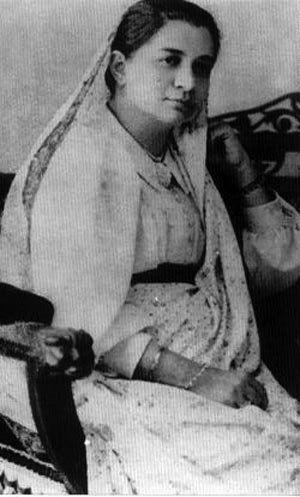
Madam Bhikaji Cama was born to a wealthy Parsi family on September 24, 1861. Her father Sorabji Framji Patel was a well known merchant. From the very beginning, she was rebellious by nature. She received good education in English and at the same time learnt various languages. Even when she was young, she had a fire in her to do something for her country.
When she attained a mature age, she was married to Rustom K. R. Cama, who was a lawyer by profession and social worker by choice. They always had contradictory views about the British Government. On one hand, where Mr. Cama felt that the British did a lot for the development of the country, then on the other hand, his wife felt that they have weakened the nation by practicing an extreme form of imperialism. Thus, their marriage failed due to the incompatibility between them. After that, Madam Cama got engaged in various social activities.
When Bombay presidency was affected by the outbreak of plague, Madam Cama occupied the vanguard position in saving the victims. In fact, she herself fell prey to this deadly disease. But, by God’s grace she was saved. She was advised bed rest for some time. So, she left for London in the year 1902. She was the private secretary of Dadabhai Nauroji, a great Indian nationalist leader. Madam Cama was the one to unfurl the tricolour flag of India at Stuttgart.
She travelled extensively and made a worldwide declaration of India’s independence struggle. She sought the support of educated Indians to speak against the tyranny of the British. She was India’s first cultural representative to the US. On coming back to London, she began publishing pamphlets on the patriotic material. She strived hard for the unification of the Hindus and the Muslims. She lended her whole-hearted support to the revolutionaries operating from and outside India. British kept a constant track of her activities.
Her residence at Paris provided shelter to a large number of revolutionaries. Savarkar got the motivation from her to write a book on the history of India’s first war of independence. She also supported in its publishing, which was done in Holland. During those times, all the publishers were scared of publishing such kind of a material. She also became the publisher of the revolutionary magazine titled ‘Vande Mataram’. She helped in its distribution as well.
Madam Cama was instrumental in the struggle for the rights of Indian women. She emphasized on the need for women to join the revolutionary group, which was considered essential for building a strong nation. When the First World War took place in the year 1914, Madam Cama took the initiative to awaken the people and make them realize the harm that would be caused to the nation by fighting with the mighty forces. The British had virtually banned her entry into the country. But, she was a real bravo who did not give up. She went to India, but due to her illness, she had to be hospitalized. The doctors could not save her life and she died on August 13, 1936.

